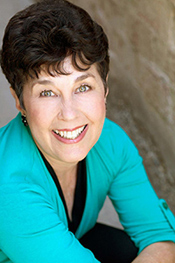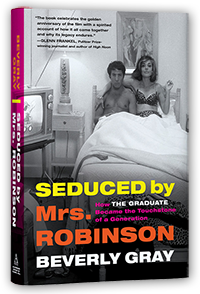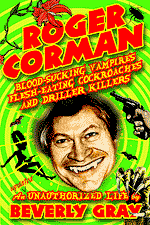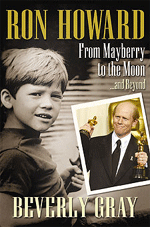It’s funny how the letter Y has offered me only slim
pickings, when it comes to the Wonderful World of Roger Corman. I can’t think
of any colorful Corman alumni, or ageing stars, or slightly slimy overseas
entrepreneurs whose names start with today’s letter. So I’ll talk about a word
that has always been an important part of the Roger Corman lexicon: YOUNG.
Look back at Roger’s early film
output, and you’ll see The Young Racers. In
my New World days, over my desk was a poster of one of Julie Corman’s first productions,
The Young Nurses. This was the usual
slick combo of comedy, action, and hospital cuties who looked attractive both
in and out of uniform. I scan the cast list now and see some distinguished
veterans of the acting profession, including Allan Arbus, Nan Martin, Dick
Miller, even the celebrated indie director Sam Fuller (The Big Red One), who enjoyed taking an acting role now and again.
I’m told this was also the very last film of Mantan Moreland, the black comic
actor who survived literally hundreds of movie roles as scaredy-cat butlers and
Pullman porters and shoeshine boys. But the point of The Young Nurses, of course, was to appeal to youthful moviegoers
much more interested in hot chicks than in cinema history. Those stories of
Quentin Tarantino sneaking out of his mother’s house at night to go see New
World movies? He was the ideal Corman audience.
Roger, when I first met him in 1973, was in his mid-forties.
So he was no youngster, even though he was newly married and not yet a father.
But he had forged his career, starting in the mid-fifties, when he was not long
out of college. At that time it didn’t make sense to him that the studios were
casting as romantic leads actors nearly twice his own age. Look at Audrey
Hepburn’s co-stars at the beginning of her screen career. In 1953’s Roman Holiday, she was a pixie-ish twenty-four,
but she played opposite Gregory Peck, who was thirty-seven. The following year,
she starred as Sabrina, who had to
choose between William Holden (thirty-six) and Humphrey Bogart (fifty-five).
One year later, in Funny Face, she
romanced Fred Astaire (fifty-eight). And in each case the unfolding romance had
something to do with wealthy people and picturesque European capitals. I’m
choosing examples from the field of romantic comedy, which happens to be a favorite
of mine. But in action films too the stars were getting long in the tooth.
Roger’s
gut feelings about the burgeoning power of the youth market were shared by the
owners of American International Pictures, Jim Nicholson and Samuel Z.
Arkoff. AIP was formed to take
full-advantage of the so-called Consent Decree, a Supreme Court anti-trust
ruling that upended the major studios’ tactic of booking only their own films
into motion picture theatre chains they controlled. Suddenly there were movie
houses – particularly drive-ins – that needed product. AIP was happy to supply
it, figuring that young post-war kids with money in their jeans would like
spending their cash on flicks that featured monsters and girls in bikinis.
It
worked. Soon AIP and other small independent film companies were grinding out
genre films – horror, sci-fi, beach party romps -- with youthful casts.
(Exactly the kind of movies that Bill Dever’s lively B-Movie Nation site salutes
today.) Ten years later, as American kids became bolder, the movies took on a
harder edge, featuring bikers and the drug scene and social rebellion. Like
Roger Corman’s seminal The Wild Angels and
The Trip. And Dick Clark’s Psych-Out, featuring a long-haired Jack
Nicholson and Bruce Dern. And Sam Katzman’s cheesy Riot on Sunset Strip. Yup, the good, the bad, and the ugly.








Hi Juliet! I just made the worthwhile trek to visit your blog. Thanks for stopping by!
ReplyDeleteBeverly
It was a marvelous idea - lucrative too. It's funny though that as you mention, none of the men involved were actually young, which is another reason I think that in the 70's Mr. Corman provided the guidance, but left the actual filmmaking to younger people. But as I get older the more I realize it's true - youth is wasted on the young!
ReplyDeleteHow can I help but agree, Mr. C? I'm just off a plane from NYC, and feeling pretty darn pooped!
ReplyDelete